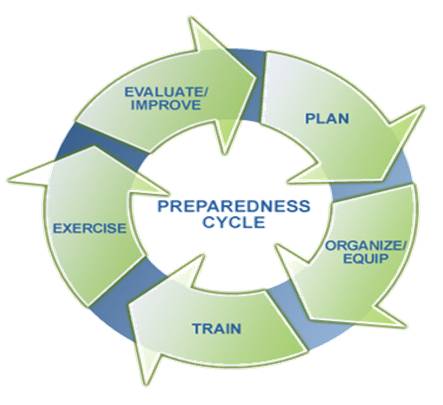Emergency Preparedness
Making sure that people with disabilities have full access to state and local government emergency preparedness and response programs is a critical part of ADA obligations. Include the needs of people who use mobility aids such as wheelchairs, scooters, walkers, canes or crutches, or people who have limited stamina. Plans should also include people who use oxygen or respirators, people who are blind or who have low vision, people who are deaf or hard of hearing, people who have a cognitive disability, people with mental illness, and those with other disabilities.
Issues that have the greatest impact on people with disabilities include:
-
Notification - Many traditional emergency notification methods are not accessible to or usable by people with disabilities. People who are deaf or hard of hearing cannot hear radio, television, sirens, or other audible alerts. Those who are blind or who have low vision may not be aware of visual cues, such as flashing lights. Warning methods should be developed to ensure that all citizens will have the information necessary to make sound decisions and take appropriate, responsible action.
-
Evacuation – People with a mobility disability may need assistance leaving a building without a working elevator. People who are blind may not be able to use traditional orientation and navigation methods. A person who is deaf may be trapped and unable to communicate because the only communication device relies on voice. Procedures should be in place to ensure that people with disabilities can evacuate the physical area under different conditions.
-
Emergency transportation - Accessible transportation may be needed to evacuate people with disabilities. Some communities have used lift-equipped school to evacuate people who use wheelchairs during floods.
-
Medication, refrigeration, and back-up power - A reasonable number of shelters should have back-up generators and a way to keep medications in a refrigerator or a cooler with ice. These shelters should be made available on a priority basis to people who require access to electricity and refrigeration, for example, for using life-sustaining medical devices, providing power to motorized wheelchairs, and preserving medications.
-
Locations of accessible emergency shelters and other shelters with specific feature - The public should be notified about the location of these shelters. Emergency personnel need lists of where they are and information should be easily found on websites.
-
Service animals - People with disabilities who use service animals should not be separated from their service animals, even if pets are not permitted. Service animals are the responsibility of their handlers who must keep them under control at all times.
-
Access to information - Communication must be accessible for people who are deaf or hard of hearing. Staff and volunteers should be trained on basic ways to provide accessible communication, including exchanging notes or posting written announcements to go with spoken announcements. Staff and volunteers should read printed information, upon request, to people who are blind or who have low vision.


User Comments/Questions
Add Comment/Question